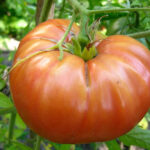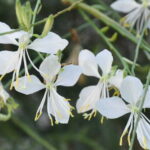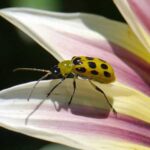Do you love Szechuan beef? Do you crave a hot dish full of Chinese pepper with a warm heat that leaves your lips tingling? If you answered yes to either question, look no further than the Sichuan pepper plant!
Szechuan peppers aren’t chili peppers. They’re berries that grow on a Sichuan pepper tree. People grow Szechuan pepper tree for culinary and medicinal purposes. Szechuan pepper plants have a long history in China, where they originated.
Why there are different spellings of ‘Szechuan’ in the phrase ‘Szechuan pepper’? How can this pepper be so spicy? This answers those questions and covers how to grow Szechuan pepper too.
Quick Care Guide

| Common Name(s) | Sichuan pepper, Szechuan pepper, Szechwan pepper, Chinese pepper, Chinese prickly ash, mala pepper, Timut pepper |
| Scientific Name | Zanthoxylum spp. |
| Days to Harvest | 120 days |
| Light | Full sun to partial shade |
| Water | 1 inch per week |
| Soil | Well-draining |
| Fertilizer | All-purpose, slow-release |
| Pests | Aphids, citrus leafminer (the latter only minimally) |
| Diseases | Pepper tree leaf blotch, fusarium wilt, alternaria, citrus canker |
All About The Sichuan Pepper Plant
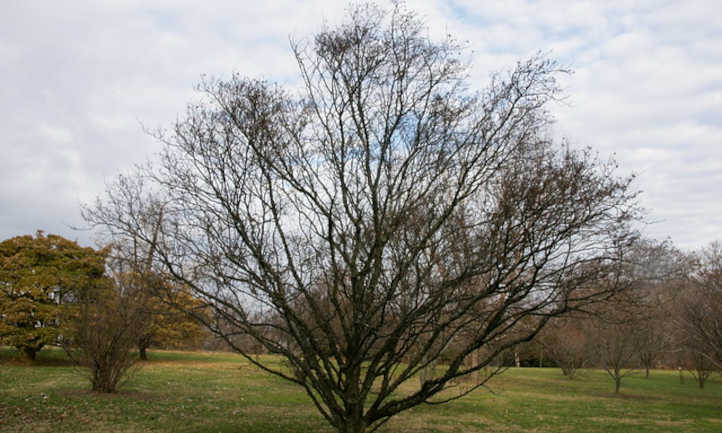
Szechuan pepper is a member of the global genus Zanthoxylum, which includes rue and citrus trees – of which Szechuan is closely related. The common names Szechuan pepper, Szechwan pepper, Chinese pepper, Chinese prickly ash, mala pepper, and Timut pepper refer to multiple species. Differences in spelling Sichuan (Szechuan or Szechwan) are due to the Americanization of the name of the region where the pepper originated.
The Szechuan province is where Szechuan pepper plants were first cultivated in the 1st century CE. At the time, this Chinese cuisine was not spicy. In fact, Sichuan peppercorns aren’t technically spicy. Instead, they’re strangely numbing and have an anesthetic feeling that mitigates the spiciness of hot chili peppers – although that wasn’t their initial purpose. It wasn’t until the 4th century CE that hotter dishes became common in the Szechuan region.
The Szechuan pepper tree is a spiky bush that grows between 8 and 15 feet tall. Each branch has alternating sets of thorns and 5 to 9 pairs of compound leaves that slightly resemble a fern. Leaves emerge in early spring. In April and May, young flowers of Szechuan pepper trees bloom with either male or female parts. The male tree’s purpose is to pollinate the female tree in early summer, therefore the Szechuan pepper forms solely on female trees.
Male blooms are tiny, resembling small elderflower florets, with yellow-green petals. The Sichuan pepper tree can be hand-pollinated, but benefits from visits by insect pollinators. A green Sichuan pepper forms with successful pollination. In early autumn they turn bright red and burst open releasing Sichuan peppercorns, which are little black seeds. It’s at this time, leaves fall from the tree in preparation for winter dormancy.
The flower, pepper, leaves, and shoots are consumed. Corns are used in a Chinese five spice powder mix along with ground star anise, cinnamon stick, fennel seed, and clove. Alternative forms of Chinese five spice include white pepper instead of Szechuan pepper. Sichuan pepper oil is common in dipping sauces. The leaves are made into a citrusy pesto-like paste, grilled with shoots and fish, or put into soups. The peppercorns have the best numbing sensation when they are subject to gentle toasting and grinding into a spice powder or flavored salt. Szechuan cooking is known around the world.
The peppercorns were banned from the US along with other members of the citrus family from 1968 to 2005 because of problems with citrus canker. This bacterial disease attacks citrus trees and can wipe out an orchard in a short time. While the ban lasted decades, it was only loosely enforced until 2002. The ban was eventually lifted in 2007, and today people can order peppercorns to be shipped worldwide.
Types of Sichuan Pepper
Zanthoxylum bungeanum is the pepper used in Chinese cuisine, particularly in the Szechuan region. It grows easily in USDA hardiness zones 5 through 9. That’s because its native range includes the cold areas of northern China through the subtropics of the south. Each fruit contains a single seed that is ground and combined with chili pepper to create the spicy heat people commonly seek out.
Zanthoxylum armatum is endemic to Pakistan, Southeast Asia, Japan, and Korea. It’s commonly known as prickly ash tree. It grows easily in zones 5 through 9, up to 11 feet tall. It’s different from other Zanthoxylum peppers because the leaves are winged and rust-colored. The fruits of this tree are purplish red, and it’s smaller than other varieties.
Zanthoxylum piperitum is a prolific Japanese pepper. It grows in zones 5 through 9. What distinguishes it is the very dark seed contained within the bright red peppercorns. Relatively small quantities of the black pepper contain bufotenin, which is a tryptamine that affects serotonin receptors.
Planting Sichuan Pepper
Select a site in a garden bed or in a large container with good drainage to plant your Szechuan pepper plants in fall or spring. The site should have well-drained soil and full sun. Because citrus canker is a concern, keep them away from other citrus trees. Depending on the size of the Szechuan pepper plants you’ve chosen, space them 12 to 18 feet apart. Containers should be large enough to accommodate the root system with some room for the Szechuan pepper to grow.
To plant your trees, dig a hole large enough to accommodate the root system, and add a handful of fertilizer before placing the Szechuan pepper plants within. Then, replace the soil, and mound it slightly around the base of the tree, leaving a couple of inches of space between the mound and the trunk. Wind a tree guard around the base to protect young bark from animals who might want to numb their gums on the tree. Plant transplants or bare root shrubs this way. Most nurseries supply Szechuan pepper transplants in nursery pots.
Alternatively, grow Szechuan peppers from seeds in starter pots. Provide well-draining soil, and fertilizer at planting. Then keep the soil moist, and the pots out of frosty weather. They’ll need at least three months of cold weather to germinate.
Care
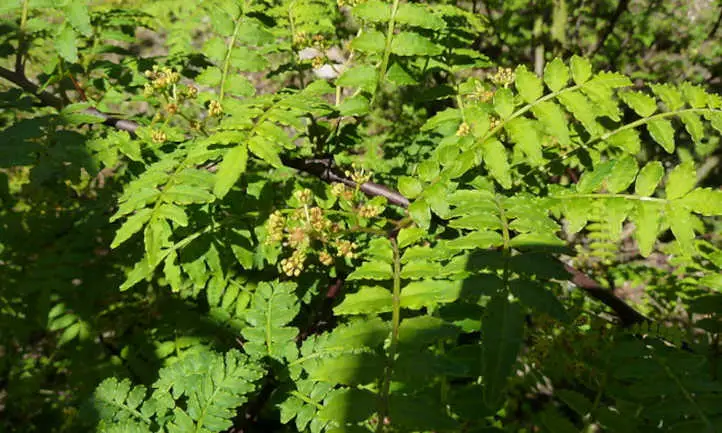
Now that you know how to plant Szechuan pepper plants, let’s discuss how to grow Szechuan pepper. Then you can incorporate this interesting spice into fried foods for seasons to come.
Sun and Temperature
Grow Szechuan pepper in an area with full sun that is direct for 8 to 12 hours per day. Partial shade is adequate as well but reduces yields slightly. In hotter climates, partial shade provides protection from intense sunlight. Most varieties grow in zones 5 through 9, where temperatures range from chilly to subtropic. The ideal temperature range for growing Szechuan pepper is between 40 and 50 degrees Fahrenheit. Szechuan pepper plants handle lows in the single digits, especially if they’re wrapped in preparation for the cold. Hotter climates are no issue for these spiny bushes, but yellowing leaves result from too much heat.
Water and Humidity
When Szechuan pepper is young, water it daily. Container-grown plants will need more water than in-ground plants. Ensure the soil stays moist, but not waterlogged. Use drip irrigation to water your Szechuan peppers in the morning. Soaker hoses work just as well. Concentrate water at the base of the plant, and avoid wetting the leaves. When it rains often, cut back. In drought, add enough water so the soil remains moist. Some varieties are drought-tolerant.
Soil
The only soil requirement for growing Szechuan pepper is that it is well-draining. In compacted soils, add agricultural sand, organic matter, perlite, or loose potting blends to improve drainage. It’s ok to grow Szechuan peppers in poor soils, but they will benefit from a little bit of organic matter. Grow Szechuan peppers in slightly acidic soil around 5.5 pH.
Fertilizing
Provide the Szechuan pepper plant with a handful of 10-10-10 pellet fertilizer at planting. Add another handful in the second year of growth during spring and summer when the tree is developing.
Pruning
When you grow Szechuan peppers, you won’t need to prune as much as you would other plants. If you’d like to change the shape of the bush or removed damaged, diseased, or dead branches, prune them off. Avoid removing new growth where Szechuan flowers turn into peppercorns.
Harvesting and Storing
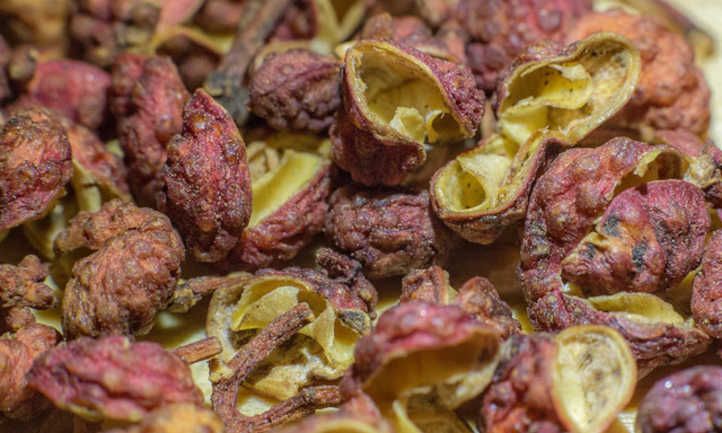
In early summer, with successful pollination, Szechuan peppercorns form. In early autumn, it’s time to harvest them. Let’s discuss the harvesting process and how to store your yield.
Harvesting
You’ll know it’s time to harvest the plants when the corns open slightly revealing the inner seed. Remove the entire floret, and dry it somewhere warm with good air circulation for a day or two. Any peppercorns that are still closed should be placed on paper to ripen and dry. Separate the hulls from the seeds and put them in storage to be used as whole spices, or use a clean coffee grinder to process them both into a coarse powder mixed with coarse salt. They can be lightly toasted on a baking tray and ground into a fine powder. Use it to add a citrus-like flavor to dishes. Add them to the lightly oiled skin of meats or stir fry them with veggies. Alternatively, dry fry equal amounts of peppercorns and salt, grind them, and store them as a fine powder.
Storing
Whole peppercorns store for a few years in an airtight jar at room temperature. Freshly ground powders or coarse salts used to season meat should be used within two weeks for the best flavor. Most guides suggest grinding it a little at a time to preserve flavor.
If you’d like to make Szechuan pepper oil, dry-fry the corns, crush them in a mortar and pestle, and place them in hot oil for a few minutes. Strain the oil, and store it in an airtight container at room temperature for up to three months.
Troubleshooting
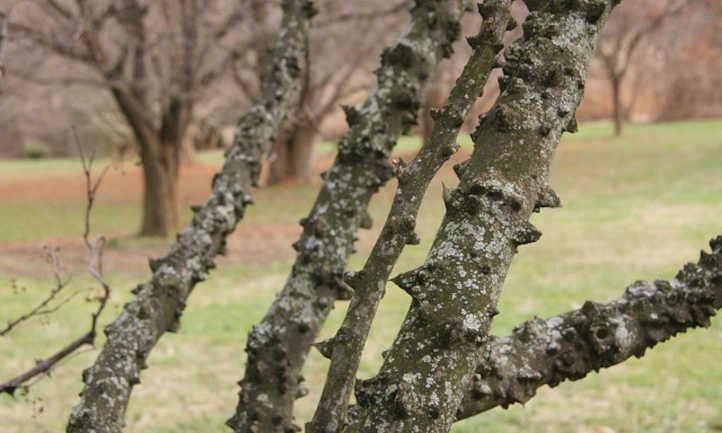
Because Szechuan pepper plants are in the same family as other citrus plants, they have similar issues associated with them. Here, we’ll discuss a few things to look out for.
Growing Problems
If you prune off new growth accidentally, you may not get as high a yield as if you didn’t prune at all.
Soil that’s compacted and doesn’t drain well will cause slowed growth in Szechuan plants. Ideally, plant the tree in temperate weather climates in a place where water won’t pool. To reduce compaction or slowed drainage, add a little bit of agricultural sand to your soil mix if you run into this problem.
In frost, unprotected trees get cold damaged. Remove any damaged limbs as soon as possible, and provide coverage in the next freeze.
Underwatering dries out the tree and reduces fruit production. Provide enough water so the top two inches are constantly moist. Waterlogging weakens and stresses the plant.
Pests
Aphids are the only insects to seriously worry about with Szechuan plants. They are congregate mites that feed on the sap and leaves of the tree. You’ll either notice them or honeydew they leave behind. To manage them, spray commercial neem oil all over the tree in the morning, outside of high heat and flowering scenarios.
While citrus leafminers may appear on your plants, they won’t cause severe damage on their own. However, the citrus leafminer is a vector for citrus canker, and as such should be prevented. Neem oil is effective here as well, and BT can be useful too.
Diseases
Pepper tree leaf blotch is a bacterial disease that causes waterlogged spots on leaves that eventually turn dark brown. Spot margins raise in later stages, yields reduce, and fruits are subject to sunscald. Treating seeds with warm water before planting prevents leaf spots. Copper fungicides sprayed in the morning also work, but their effectiveness declines over time as the bacteria build resistance. Remove any affected plant debris and dispose of it.
Fusarium wilt is a fungal disease that causes yellowing and wilting of trees. In later stages the fungus causes death. Warm water treatments of seeds may prevent infections. Some mycological treatments have been shown to reduce the spread of Fusarium fungi in the soil, but once it takes hold, there are no viable treatments. Do not allow the soil to remain soggy for long, as it provides the right habitat for Fusarium fungi.
Alternaria is a condition that results from fungal infection of Szechuan plants. The leaves take on a brown-spotted appearance and curl. Defoliation and death occur in late stages. Most resources recommend treatment with copper fungicides, applied at 7-10 day intervals until the spread of leaf spot stops. Remove damaged foliage to prevent fungal spores from developing and spreading.
Citrus canker is a widespread disease of citrus trees, and Sichuan pepper is closely related to citrus and thus susceptible. There is no cure for this disease, so prevention is essential. Maintain good sanitation practices and keep citrus leafminers away from your trees, as they are pest vectors for this disease.
Frequently Asked Questions
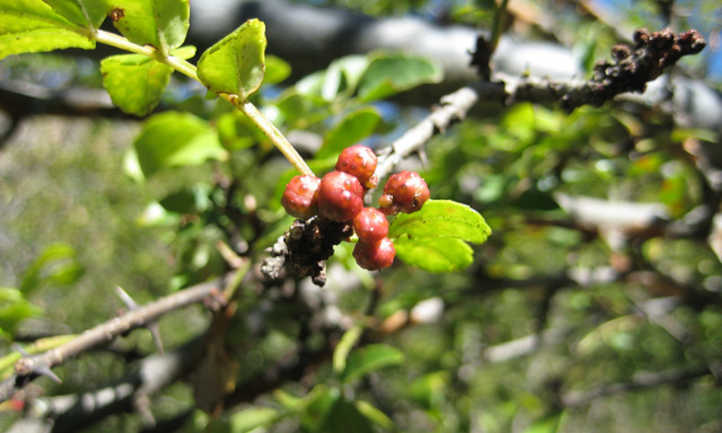
Q: Can you grow Sichuan pepper in the US?
A: Yes! The ban on growing certain citrus plants in the US has been lifted.
Q: Can I grow Sichuan pepper from seed?
A: Yes. Check out the Planting section of this piece.
Q: Is Sichuan pepper poisonous?
A: No, but it does cause a numbing sensation when eaten.
Q: Why was Sichuan pepper banned?
A: It and other citrus plants were believed to be susceptible to an uncontrollable bacterial disease called citrus canker.





